Going on vacation is supposed to be a chance to relax and unwind, but some U.S. spots offer wildlife encounters that might make your heart race for a different reason. If you’re an adrenaline junkie or just someone who enjoys a good story to tell back home, these destinations might be perfect for you. Here’s a list of places where the local wildlife gets up close and personal—sometimes a little too much. Get ready to dive into some real-life adventures and maybe test your courage along the way.
1. Yellowstone National Park, Wyoming
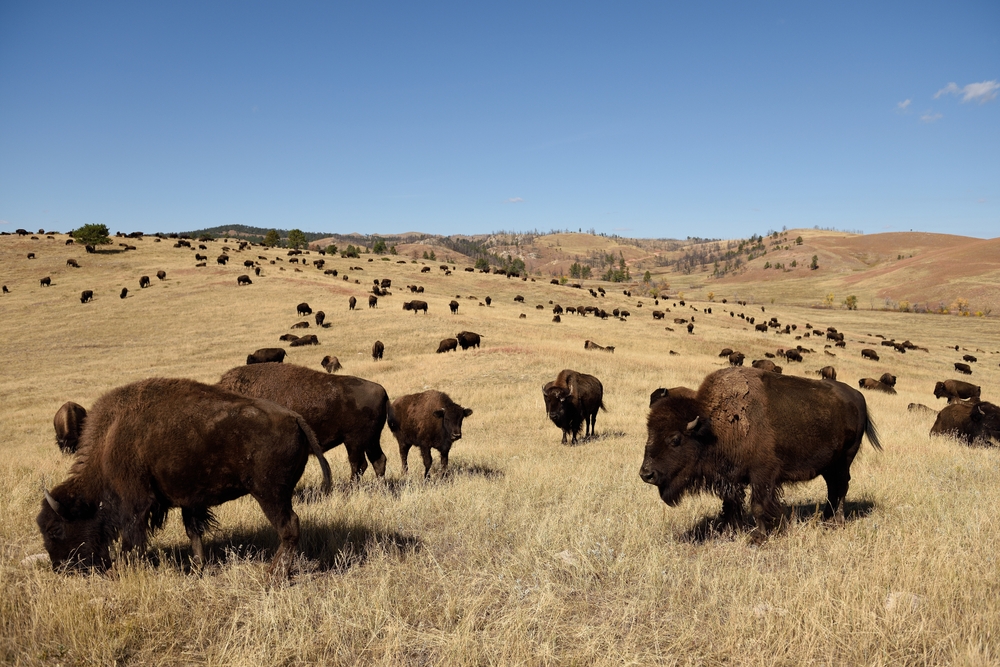
Yellowstone is renowned for its breathtaking landscapes and geothermal wonders, but it’s also home to some of the most unpredictable wildlife in the country. When you’re wandering through its vast terrain, spotting a bison or grizzly bear isn’t just possible; it’s highly probable. Bison can run three times faster than a human and are known to charge at tourists who get too close. Given their massive size and strength, it’s best to enjoy these magnificent creatures from a safe distance. Always respect their space—after all, it’s their home, not yours.
The park is a hotspot for bear encounters as well, with both grizzlies and black bears roaming freely. Although bear attacks are rare, they do happen, so it’s essential to carry bear spray and know how to use it. Rangers also advise visitors to make noise while hiking to avoid surprising one of these giants. Despite the risks, seeing a bear in the wild can be a once-in-a-lifetime experience. Just remember, your safety should always come first, so follow the park’s guidelines.
2. Everglades National Park, Florida
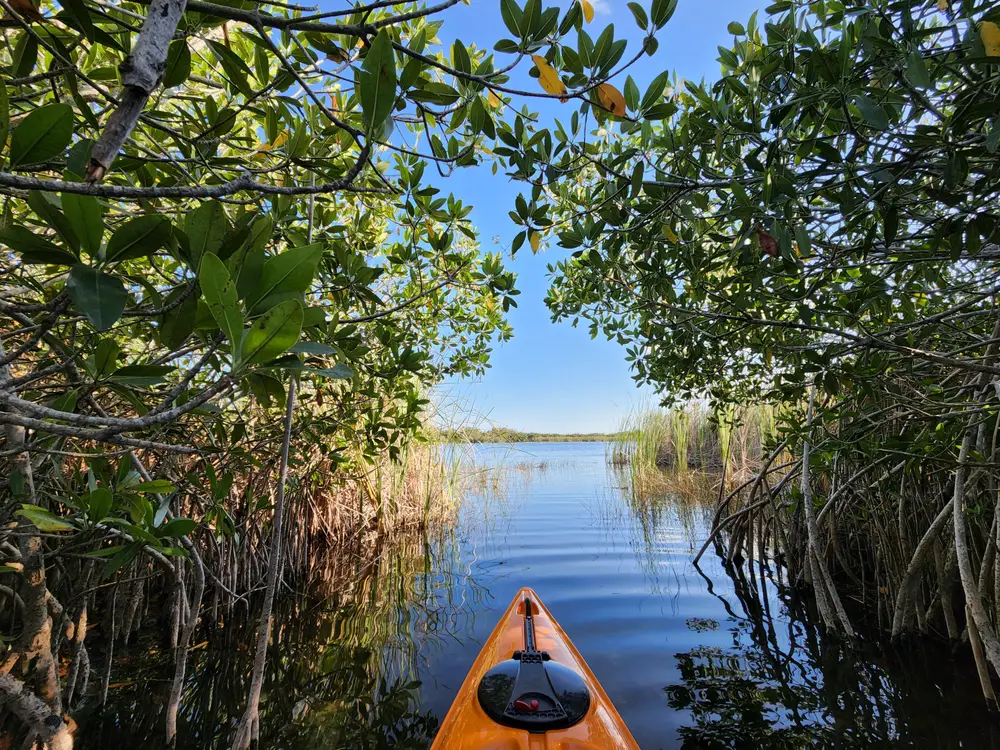
The Everglades offers a unique ecosystem, perfect for those who love both water and wildlife. But watch out, because lurking just beneath the surface are alligators that could make your trip a bit more thrilling than planned. It’s not uncommon to see these reptiles sunbathing on the banks or swimming through the swampy waters. Though they generally mind their own business, getting too close is a bad idea. Stick to designated paths and keep your limbs inside your kayak or boat at all times.
Aside from alligators, you’re likely to encounter a variety of birds, snakes, and possibly even a panther if you’re lucky—or unlucky, depending on your perspective. This park is a haven for wildlife enthusiasts, but it requires a keen sense of awareness and respect for its inhabitants. Remember, these animals are wild and unpredictable. The key is to stay alert and maintain a respectful distance. A good pair of binoculars can help you enjoy the wildlife without putting yourself in harm’s way.
3. Denali National Park, Alaska

Denali is the crown jewel of Alaska, offering some of the most stunning vistas and wildlife encounters you can imagine. Home to moose, caribou, and an impressive number of wolves, Denali provides a genuine wilderness experience. According to wildlife biologist Sarah Johnson, wolves in the park have been the subject of extensive research, providing valuable insights into their behavior and habitat needs. While sightings of these elusive creatures can be thrilling, keep in mind that they are wild animals and should be respected as such. A good rule of thumb is to keep a minimum distance of 300 feet from these predators.
Moose in Denali are massive and can be quite aggressive, especially during the fall rut when males compete for mates. They are responsible for more injuries to humans than bears, so it’s crucial to give them plenty of space. Caribou, on the other hand, often travel in herds and can be seen grazing across the tundra. These encounters offer incredible photo opportunities, but always prioritize your safety over the perfect shot. Following park guidelines will help ensure a safe and enjoyable adventure in this Alaskan paradise.
4. Great Smoky Mountains National Park, Tennessee/North Carolina
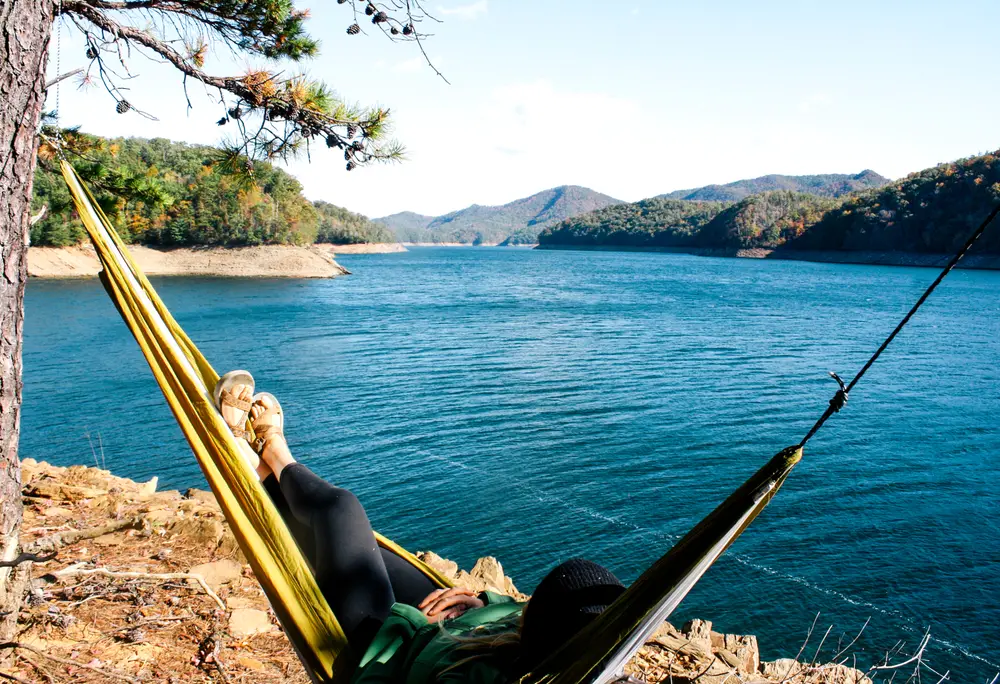
The Great Smoky Mountains are well-known for their rich biodiversity, offering a chance to encounter creatures that range from the adorable to the intimidating. Black bears are the stars of the show here, with the park being home to around 1,500 of them. Most of the time, these bears are more interested in foraging for food than bothering humans, but it’s still wise to keep your distance. Use bear-proof containers for food and dispose of trash properly to avoid attracting these curious creatures.
Beyond bears, you might stumble upon elk, white-tailed deer, and a variety of reptiles and amphibians. The park’s lush forests and wildflower-covered meadows create the perfect backdrop for wildlife watching. Bird enthusiasts will also have plenty to admire, with over 240 bird species spotted in the area. While the possibility of a wildlife encounter is exciting, always remain cautious and aware of your surroundings. The wilderness here is beautiful, but should be treated with respect.
5. Glacier National Park, Montana

Glacier National Park is a dream come true for nature lovers, offering rugged mountains, crystal-clear lakes, and a diverse array of wildlife. Grizzly and black bears roam the park, and sightings are not uncommon, which is why carrying bear spray is highly recommended. According to a study by the U.S. Geological Survey, the park is home to around 300 grizzly bears, making it one of the most bear-dense regions in the lower 48 states. These bears are a vital part of the ecosystem, and observing them in the wild is both a privilege and a responsibility. Always adhere to park guidelines and respect these magnificent creatures from a safe distance.
Aside from bears, the park is inhabited by mountain goats, bighorn sheep, and a variety of bird species, including the rare harlequin duck. The park’s diverse habitats support a range of wildlife, making each visit unique. Hikers should stay on marked trails and keep an eye out for wildlife crossing signs. By remaining vigilant and prepared, you can enjoy all the natural beauty Glacier National Park has to offer while keeping yourself and the wildlife safe. The memories and photos you bring back will be well worth the effort.
6. Olympic National Park, Washington
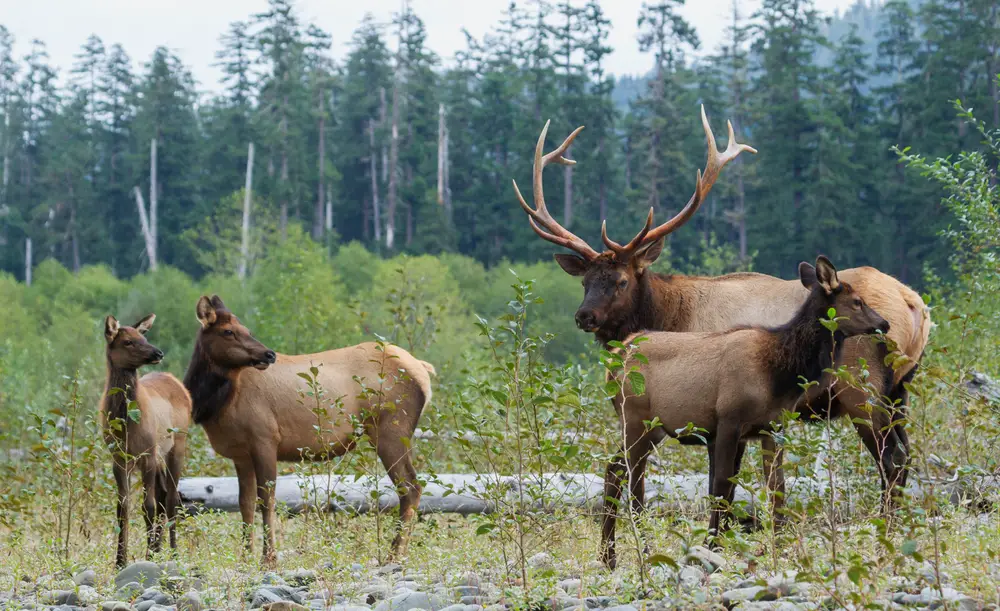
Olympic National Park is a haven for wildlife enthusiasts, with its diverse ecosystems ranging from temperate rainforests to alpine peaks. The park is famous for its population of Roosevelt elk, which are often seen grazing in the lush meadows. While they may seem docile, elk can be aggressive, particularly during the rutting season in fall. It’s best to maintain a safe distance and use binoculars for a closer look at these majestic creatures. Just as with any wildlife encounter, respect their space and prioritize your safety.
Alongside elk, the park is home to black bears, mountain lions, and a remarkable array of bird species. The park’s coastal areas also offer chances to spot marine mammals like seals and sea otters. If you’re a birdwatcher, keep an eye out for spotted owls and marbled murrelets, which are iconic in the region. With such a wide variety of wildlife, Olympic National Park provides endless opportunities for observation and discovery. Just remember to tread lightly and leave no trace to help protect this unique environment.
7. Katmai National Park, Alaska
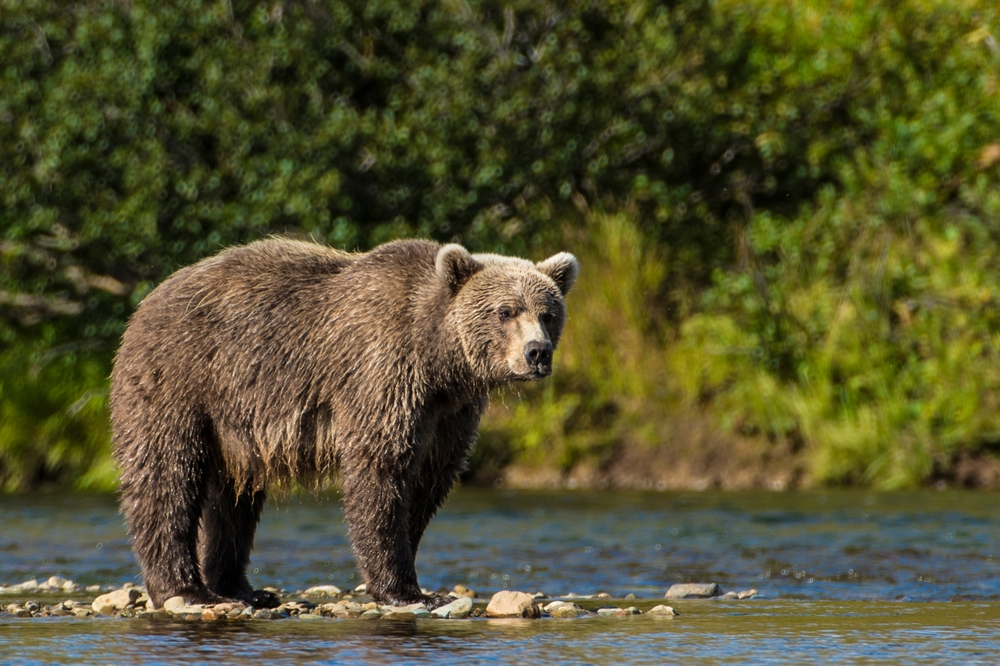
Katmai National Park is famous for its brown bears, especially at Brooks Falls, where they gather in large numbers to fish for salmon. Watching these massive bears catch fish mid-air is a spectacular sight that attracts visitors from around the world. According to bear researcher Dr. Jane Anderson, Katmai’s bear population is one of the healthiest due to the abundant food supply. While the park provides viewing platforms to safely observe these giants, maintaining a respectful distance is crucial. Engaging with these creatures in their natural habitat requires caution and respect for both your safety and theirs.
In addition to bears, Katmai offers a chance to see wolves, moose, and a variety of bird species. The park’s remote location means it’s less crowded, allowing for a more intimate wildlife experience. With its volcanoes and vast wilderness, Katmai is a truly unique destination. Whether you’re hiking through its landscapes or floating along its rivers, wildlife encounters are practically guaranteed. Always be prepared with the right gear and knowledge, ensuring that your visit is both safe and unforgettable.
8. Rocky Mountain National Park, Colorado

Rocky Mountain National Park is a wildlife lover’s paradise, offering chances to see everything from elk and mule deer to bighorn sheep and black bears. The park’s diverse landscapes provide perfect habitats for a wide range of species, attracting visitors eager for a glimpse of these animals in the wild. Elk are particularly abundant, often seen roaming the meadows or crossing roads. While they might seem approachable, elk can become aggressive, especially during the fall mating season. Always observe from a distance and follow park guidelines to ensure a safe encounter.
The park’s higher elevations are home to mountain goats and bighorn sheep, often spotted on rocky slopes. If you’re lucky, you might even catch a glimpse of a cougar, although sightings are rare. Birdwatchers will also find plenty to enjoy, with species like the American dipper and white-tailed ptarmigan calling the park home. Each visit to Rocky Mountain National Park offers a new chance for wildlife encounters, but it’s important to respect these creatures and their habitats. Being prepared and informed will help you make the most of your adventure.
9. Big Bend National Park, Texas

Big Bend National Park offers a unique blend of desert and mountain landscapes, providing habitats for a variety of wildlife. Visitors can expect to see everything from roadrunners and javelinas to rattlesnakes and black bears. The park’s remote location means wildlife encounters are frequent, often surprising visitors with their spontaneity. While roadrunners are more amusing than threatening, rattlesnakes demand caution. Always watch your step and be aware of your surroundings, especially in rocky areas or tall grass.
Black bears in Big Bend are more elusive but have been making a comeback in recent years, thanks to conservation efforts. Spotting one is a rare treat, but it’s essential to keep a safe distance and store food properly to avoid attracting these curious creatures. The park’s diverse wildlife also includes over 450 bird species, making it a birdwatcher’s paradise. Whether you’re hiking the trails or floating down the Rio Grande, the possibility of a wildlife encounter adds an element of excitement to your trip. Just remember to respect the park’s guidelines and keep safety in mind at all times.
10. Shenandoah National Park, Virginia
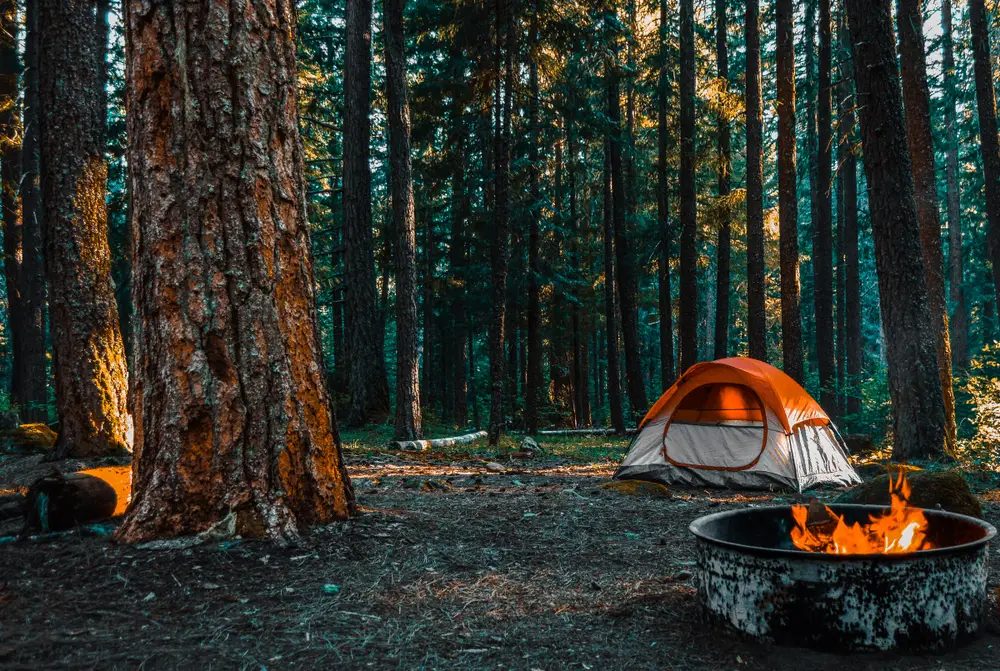
Shenandoah National Park is a haven for those seeking a mix of scenic beauty and wildlife encounters. The park’s extensive trail system offers numerous opportunities to observe creatures like black bears, deer, and wild turkeys in their natural habitat. Black bears are common in the park, and while they generally avoid humans, it’s still important to exercise caution. Store food properly and make noise while hiking to avoid surprising a bear. Keeping a safe distance ensures both your safety and theirs, allowing you to enjoy the beauty of the park without unnecessary risk.
Deer are another frequent sight in Shenandoah, often seen grazing near roadsides or in grassy meadows. While they’re more accustomed to human presence, it’s important to remember that they are still wild animals. The park’s birdlife is also diverse, with species like the scarlet tanager and barred owl calling the area home. Every visit to Shenandoah offers a chance to connect with nature and witness its inhabitants up close. By respecting the park’s guidelines and maintaining a sense of awareness, you can ensure a safe and memorable experience.
11. Acadia National Park, Maine
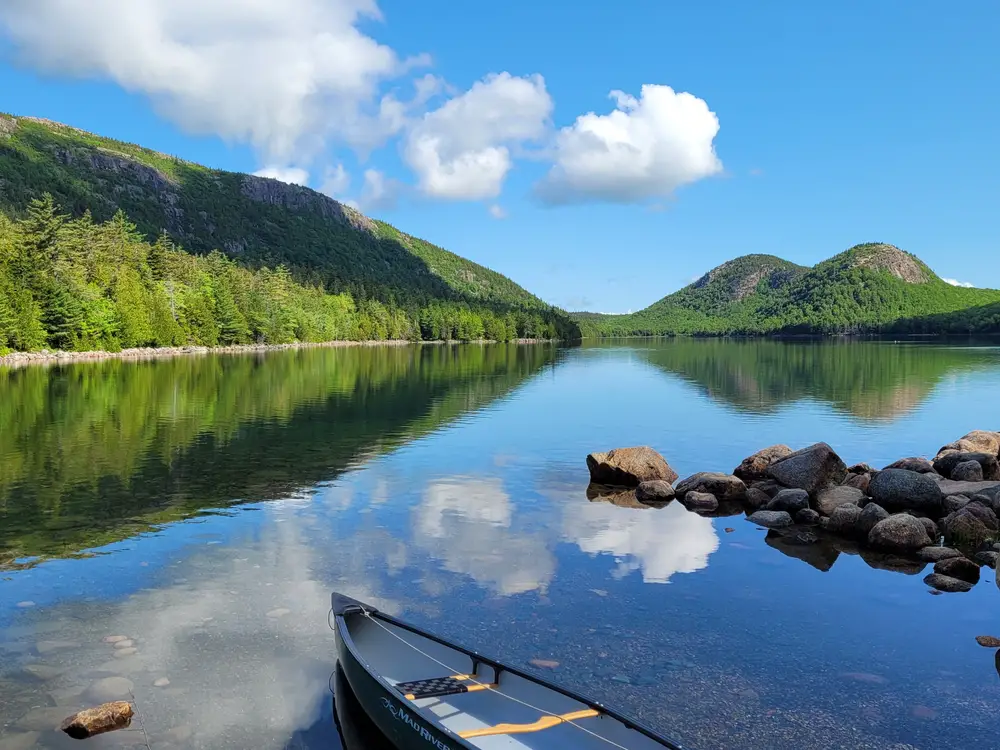
Acadia National Park is a stunning coastal destination where the Atlantic Ocean meets rugged granite cliffs and dense forests. The park’s diverse habitats support a wide range of wildlife, from puffins and peregrine falcons to moose and black bears. While the chance of encountering a bear is lower here than in some other parks, it’s still essential to be prepared. Store food securely and follow park recommendations to minimize your risk. The sight of a majestic moose or a soaring falcon is a highlight for many visitors.
Birdwatching is particularly rewarding in Acadia, with its coastal cliffs providing ideal nesting sites for a variety of seabirds. Puffins are a popular attraction, although they require a boat tour to see up close. On land, the park’s trails offer glimpses of chipmunks, foxes, and white-tailed deer. Each twist and turn of the trail brings potential for a new wildlife sighting. By treading lightly and respecting the park’s guidelines, you can enjoy the best of Acadia’s natural beauty and wildlife.
12. Grand Teton National Park, Wyoming
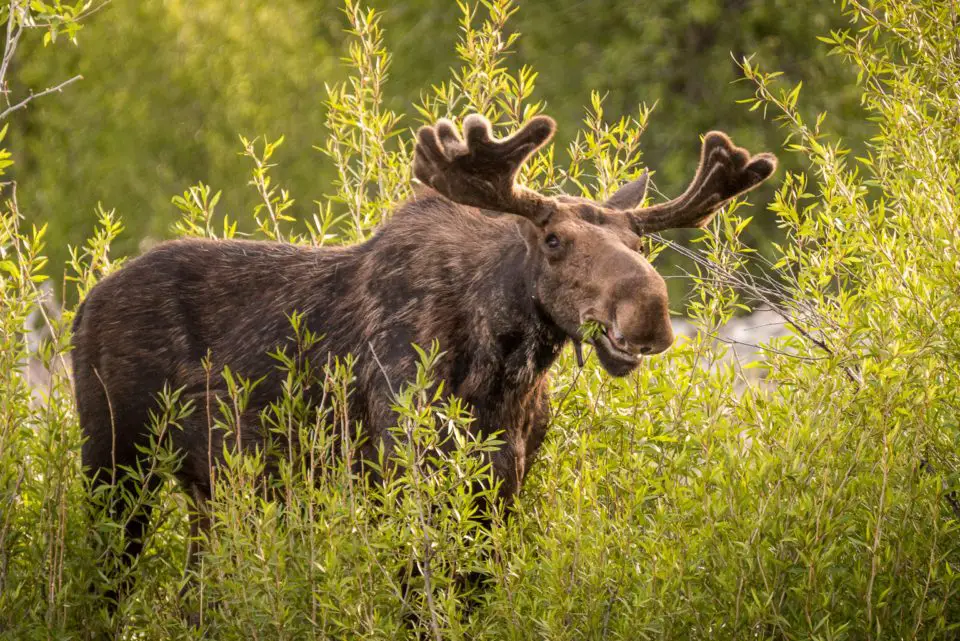
Grand Teton National Park is a land of jagged peaks and pristine lakes, drawing outdoor enthusiasts and wildlife watchers alike. The park is home to an impressive array of animals, including bison, moose, and grizzly bears. Bison are frequently seen grazing in the open fields, but it’s important to remember these powerful animals can be unpredictable. Always maintain a safe distance and never approach them, no matter how calm they appear. Respecting their space ensures both your safety and their well-being.
Moose sightings are common in the park’s lush valleys, often near water sources where they feed. These massive creatures are generally solitary, making each encounter a unique experience. In the park’s higher elevations, you might spot marmots or pikas darting among the rocks. Bird enthusiasts will find plenty to enjoy as well, with species like the bald eagle and trumpeter swan gracing the skies. Grand Teton offers endless opportunities for awe-inspiring wildlife encounters, provided you respect the park’s guidelines and stay alert.
13. Custer State Park, South Dakota
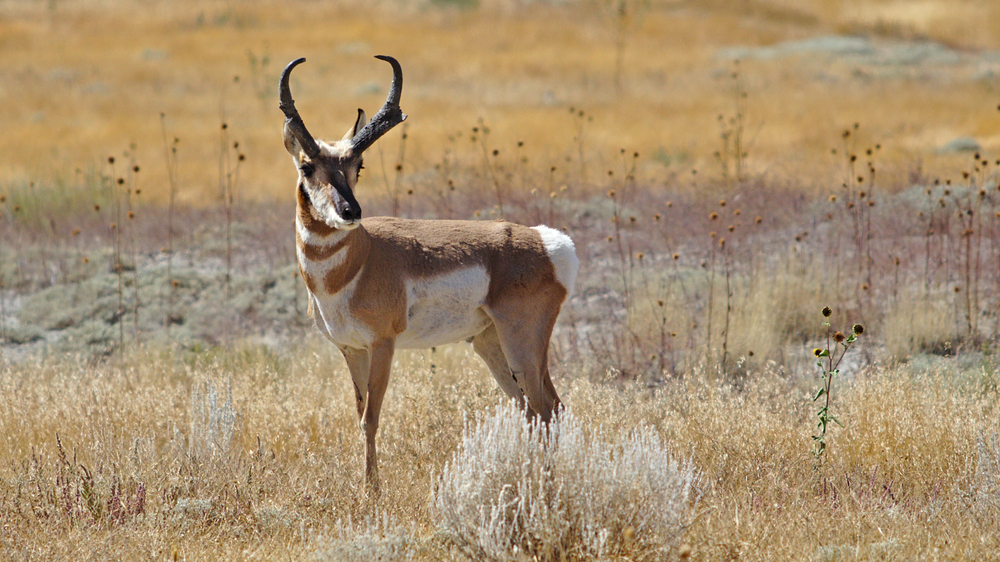
Custer State Park offers a taste of the Wild West, with its rolling prairies and iconic herd of free-roaming bison. The park’s wildlife loop road provides an excellent opportunity to view these magnificent animals up close, but always from the safety of your vehicle. Bison are the highlight here, but the park is also home to pronghorn antelope, elk, and prairie dogs. While observing from a distance is safe, it’s crucial to avoid any temptation to approach these wild animals. The thrill of seeing such a large herd in its natural habitat is an unforgettable experience.
In addition to large mammals, Custer State Park boasts a variety of bird species and smaller mammals. Keep an eye out for burrowing owls and black-tailed prairie dogs, which add to the park’s charm. The scenic landscapes and abundant wildlife make Custer a favorite among nature enthusiasts. Whether you’re driving through the park or exploring its many trails, opportunities for wildlife encounters abound. Ensure a safe and enjoyable visit by adhering to park regulations and respecting the animals’ natural behaviors.
14. Assateague Island National Seashore, Maryland/Virginia
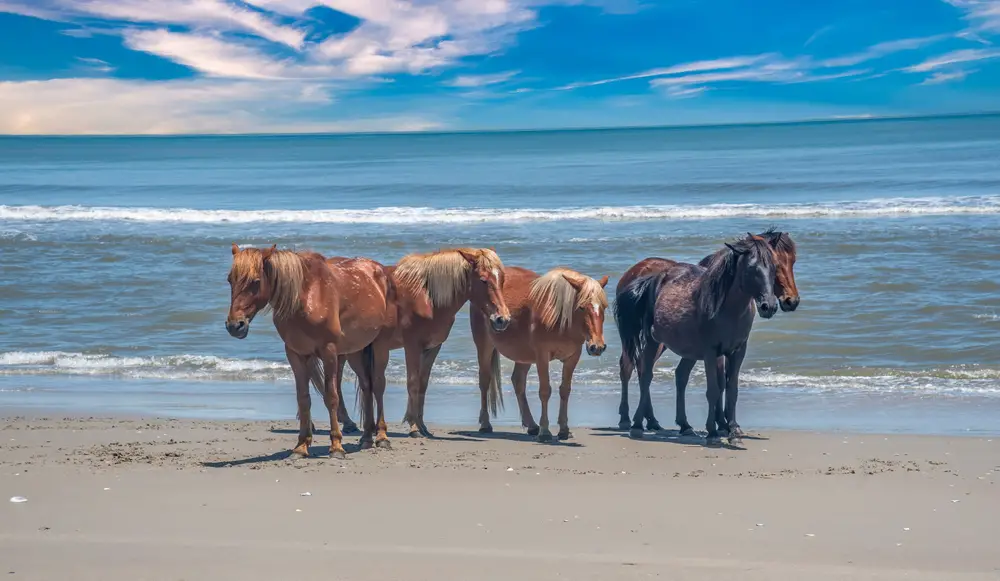
Assateague Island is famous for its wild horses, which roam freely along its beaches and marshes. These horses, descended from domesticated animals, are now a symbol of the island’s wild spirit. While they can be captivating to watch, it’s crucial to keep a safe distance, as they are unpredictable and can become aggressive if they feel threatened. The island’s coastal environment also hosts a variety of birds and marine life, offering a diverse wildlife experience. When visiting, it’s essential to respect both the animals and the habitat to ensure their preservation.
Beyond the horses, Assateague is home to an array of migratory birds, making it a paradise for birdwatchers. The island’s marshes are also rich with life, including creatures like blue crabs and terrapin turtles. Each season brings new wildlife to observe, ensuring that no two visits are the same. The island’s unique mix of coastal and marshland ecosystems provides a stunning backdrop for any wildlife adventure. By following guidelines and maintaining a respectful distance, you can fully enjoy the natural wonders Assateague Island has to offer.
